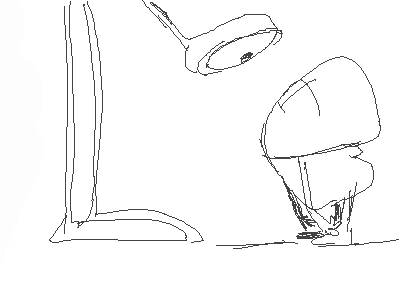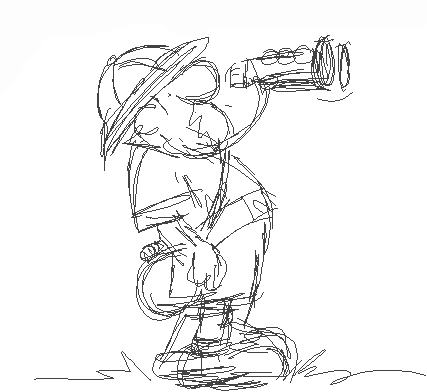Perspective Is More Than An Optical Illusion
A reader recently wrote to me that sometimes they found it difficult to read some of my blog articles. To which I inquired “what aspect of my writing causes you problems?” Their reply was that my frequent use of many references to cartoon history and early cartoons was difficult for them to follow because they were not familiar with the artists and had not watched most of these older cartoons.

It is hard for me to write or talk about any subject without referencing its history. There is so much to be learned and understood from the work done by others previously, both in terms of how people approached and solved problems and in discovering how cartooning styles and techniques evolved and in what context. If you are planning to grow and improve your skills in any subject area it is very useful to become acquainted with its history. I try to reference important cartoons and creators often in my writing, and hopefully, when one of those references shows up that is new to you, the reader, you will be inspired to research it further. Context and perspective are two benefits that are to be gained by the effort. Because as the title of this article alludes, the perspective to which I am referring is not optical perspective it is contextual perspective which is an equally important tool of the cartoonist.
One of the benefits of historical context is to gain a better understanding of the ways in which creators of the past dealt with constraints and limitations. Actually, I have written previously here in our studio's blog about the importance of constraints in shaping the creative process. It is a topic that is often missed by would-be creators and students when they decide to engage in a personal cartoon making project. All design, and ultimately creativity, flows from addressing constraints. All kinds of constraints, things like time and personal skills and collaborative relationships and yes, even finances. It is so important to understand and address all of these constraints in approaching any creative effort.

Many people say, "I could do so much more if I had unlimited _____________ " (you can fill in the blank). In truth they are missing an important reality. It is by the addressing of those limits, those constraints, that you focus your creative efforts. If you don't have constraints like time frames, self imposed deadlines, milestones and goals for your projects, then you need to create some. Because without them you will wander through the creative desert aimlessly and probably die of thirst.
So much of the really great cartoon making work of the past was inspired and shaped by situations and limitations. And there is much to be learned from how prior creators addressed those “roadblocks” and “hurtles”. I’m not telling you to go off and plant your nose in a bunch of books or to sit around all day and watch old cartoons until your brain is numb. But I do and will continue to encourage other cartoon makers to study and learn from our rich history. You have some great shoulders to stand on as you reach for your goals.

It is hard for me to write or talk about any subject without referencing its history. There is so much to be learned and understood from the work done by others previously, both in terms of how people approached and solved problems and in discovering how cartooning styles and techniques evolved and in what context. If you are planning to grow and improve your skills in any subject area it is very useful to become acquainted with its history. I try to reference important cartoons and creators often in my writing, and hopefully, when one of those references shows up that is new to you, the reader, you will be inspired to research it further. Context and perspective are two benefits that are to be gained by the effort. Because as the title of this article alludes, the perspective to which I am referring is not optical perspective it is contextual perspective which is an equally important tool of the cartoonist.
One of the benefits of historical context is to gain a better understanding of the ways in which creators of the past dealt with constraints and limitations. Actually, I have written previously here in our studio's blog about the importance of constraints in shaping the creative process. It is a topic that is often missed by would-be creators and students when they decide to engage in a personal cartoon making project. All design, and ultimately creativity, flows from addressing constraints. All kinds of constraints, things like time and personal skills and collaborative relationships and yes, even finances. It is so important to understand and address all of these constraints in approaching any creative effort.

Many people say, "I could do so much more if I had unlimited _____________ " (you can fill in the blank). In truth they are missing an important reality. It is by the addressing of those limits, those constraints, that you focus your creative efforts. If you don't have constraints like time frames, self imposed deadlines, milestones and goals for your projects, then you need to create some. Because without them you will wander through the creative desert aimlessly and probably die of thirst.
So much of the really great cartoon making work of the past was inspired and shaped by situations and limitations. And there is much to be learned from how prior creators addressed those “roadblocks” and “hurtles”. I’m not telling you to go off and plant your nose in a bunch of books or to sit around all day and watch old cartoons until your brain is numb. But I do and will continue to encourage other cartoon makers to study and learn from our rich history. You have some great shoulders to stand on as you reach for your goals.

0 Comments:
Post a Comment
<< Home